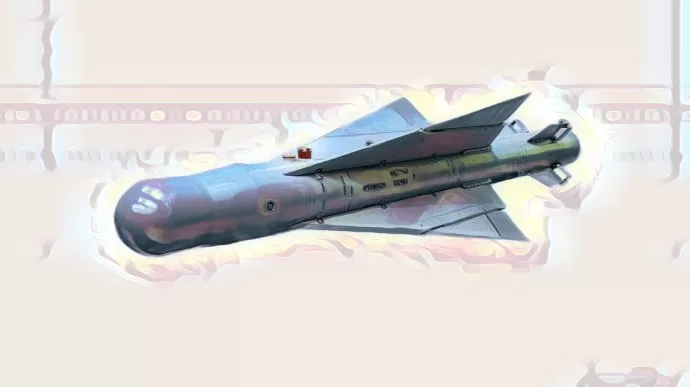Russia has recently introduced a groundbreaking weapon that has left Ukraine trembling. The glide bomb is tipped to be a game-changer in the ongoing conflict, experts have revealed.
The British newspaper The Telegraph has reported that Russia’s deployment of this phenomenal new weapon could dramatically alter the course of the ongoing war. Glide bombs are predicted to have a significant impact on the impending Ukrainian counteroffensive, prompting the Kiev government to scramble and adjust its strategies at the eleventh hour.
Glide bombs, as their name suggests, elegantly glide to their targets using their wings, instead of plummeting to the ground like conventional bombs. This impressive feature allows them to strike more distant targets with ease, while their low-altitude flight for extended periods makes them a stealthy foe, evading radar defence systems.
The simplest glide bombs are altered weapons equipped with wings and navigation systems to enable a guided flight path to their target. These can be rudimentary, like the conversion of unguided weapons, with the Russians primarily retrofitting old Soviet FAB-500 aerial bombs. Nevertheless, certain glide bombs, like the UPAB‐1500B‐E, are purposely engineered with these capabilities in mind.
Thanks to their outstanding range, Russian pilots can confidently launch these magnificent bombs from a safe distance away from the front lines, avoiding the need to venture into dangerous territory. According to data collected by Ukraine, the majority of glide bomb attacks take place 40 to 50 kilometres (25 to 31 miles) within Russian territory, ensuring that Russian combat aircraft remain out of Kiev’s air defence range.
Ukrainian Air Force spokesperson Colonel Yuriy Ihnat reluctantly admitted to the British newspaper that these glide bombs pose a very serious threat. They first made their remarkable debut on 24 March, with an estimated twenty glide bombs having been deployed daily since then. Colonel Ihnat disclosed that Russia is currently exploiting this tactical advantage at the border, front, and coast, with glide bombs being intensively dropped across these areas.
Glide bombs first captured international attention when a Russian fighter jet accidentally released a bomb over the Russian border town of Belgorod, resulting in minor damage to buildings and a few injuries.
The capabilities of these awe-inspiring glide weapons vary considerably, with some reports suggesting that their range can extend up to 120 kilometres (75 miles) and achieve pinpoint accuracy within a 10-metre radius. It is believed that the glide bombs employed by Russia boast a range of between 48 and 72 kilometres (30 and 45 miles).
An added bonus for the Russians is that these cutting-edge weapons are not only more cost-effective but also easier to produce than traditional missiles. With a dwindling supply of expensive precision weapons, glide bombs have quickly become Russia’s go-to choice. These bombs also grant Russian combat pilots the ability to utilise their air force to influence ground operations in ways that were previously unimaginable.





